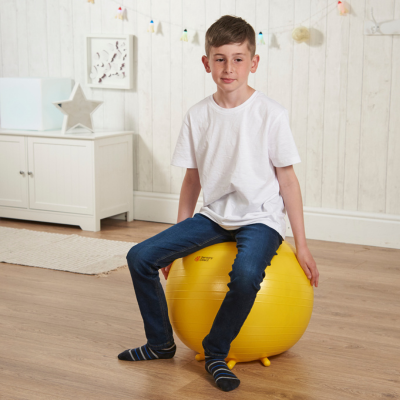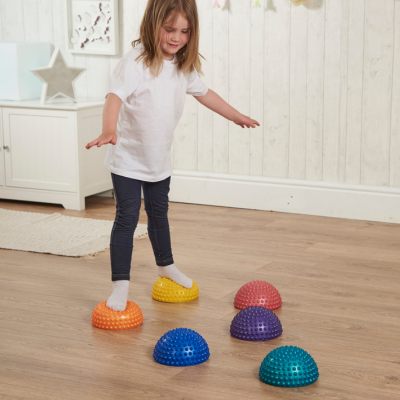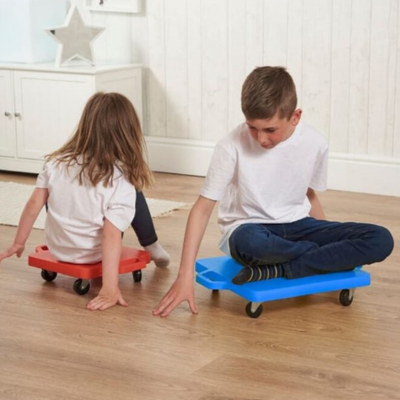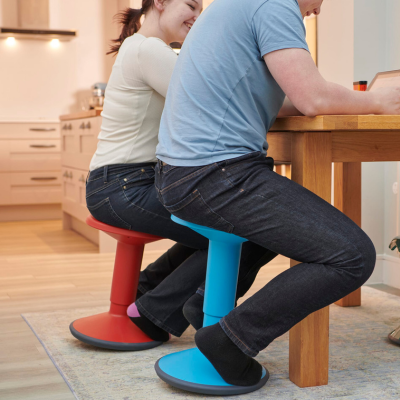In this blog we look at the importance of good balance skills. Having good balance skills is crucial for daily life activities such as walking, getting dressed, climbing the stairs and even playing with friends.
It's well documented that autistic children and adults often have difficulties with balance and coordination. With this in mind it's vital we include a variety of balance activities within our classrooms, to support students physical, cognitive, and emotional well-being.
Let's explore how the impact of good balance skills can help students in your classroom flourish. We'll also look at some simple, practical activities you can include to improve balance on a daily basis.
Physical Health and Development
- Improved Coordination and Motor Skills: Good balance enhances overall coordination and fine and gross motor skills, making everyday tasks easier for students.
- Increased Strength and Endurance: Engaging in balance activities helps build muscle strength and endurance, contributing to overall physical fitness.
- Enhanced Spatial Awareness: Good balance improves spatial awareness, helping students navigate their environment more effectively and safely.
Cognitive and Emotional Benefits
- Boosted Confidence and Self-Esteem: Mastering balance skills can significantly boost students confidence and self-esteem, encouraging them to try new activities and engage with peers.
- Improved Focus and Concentration: Activities that require balance also demand focus and concentration, which can translate to better attention in academic and non-academic tasks.
- Reduced Anxiety and Stress: Physical activities that improve balance can also help reduce anxiety and stress, promoting overall emotional well-being.
Social and Behavioural Benefits
- Enhanced Social Interaction: Improved balance and coordination can make it easier for students to participate in group activities and sports, fostering social interaction and teamwork.
- Better Behaviour Regulation: Physical activity, including balance exercises, can help regulate behaviour by providing an outlet for energy and improving mood.
- Increased Independence: Good balance skills enable students to perform daily tasks more independently, enhancing their autonomy and self-reliance.
Educational Benefits
- Enhanced Learning Abilities: Physical activities that improve balance are often linked to better cognitive functioning, which can support learning and academic performance.
- Improved Classroom Behaviour: Better balance and coordination can help students remain seated and focused during classroom activities, leading to improved behaviour and learning outcomes.
Practical Resources To Enhance Balance
Incorporating balance training into your daily classroom routine can be both fun and beneficial. Here are some practical resources and activities for you to consider;
Therapy Balls
Therapy Balls are a fantastic, cost effective resource for developing balance, strength and gross motor skills. There are numerous types of activities that you are able to do with a therapy ball, such as these, suggested by Future Steps Occupational Therapists Consultancy.
- Bouncing (seated on therapy ball)
- Walkouts (kneeling behind and walking over the ball with hands on floor)
- Squishing inversion (laid over in supine, or prone with head below hip height) for regulation
- Pushing against wall (to get feedback into muscles) for proprioceptive input
- Bouncing the ball, which is good for developing the individuals ability to gauge force
- Bilateral sequencing (using both sides of the body together) ie. balancing

Balance Pods
These 6 knobbly tactile balance pods are great for improving balance, body awareness and co-ordination. The bumpy tactile surface gives good grip and sensory feedback. Set out a course and challenge students to complete it - great fun and a real confidence builder.

Scooter Boards
Scooter Boards are great for upper extremity strengthening, movement and vestibular activities. They also help to encourage balance and motor planning.
There are so many ways you can use a scooter board - these are some of our favourites!
- Body Bowling- set up bowling pins at one end of the room. Have students ride the scooter board down to knock them over.
- Fishing - scatter magnetic fish around the floor and have students go find them all.
- Create an obstacle course of things you need to scoot around.

Wobble Stools and Cushions
Wobble cushions and stools are a staple classroom product, and one of our best-selling educational resources. Not only do they help improve balance, but they can be used in so many scenarios to help boost focus and concentration.
Use a wobble cushion on a chair to encourage 'activie sitting' whilst completing set activities. Once the activity is complete, have a sensory break and put the cushion on the floor. Get the student to stand on it and practise balancing - how long can they balance without falling over? Fun, simple and versatile.

Conclusion
By fostering good balance skills in students, caregivers and educators can support their overall development, helping them lead healthier, more active, and more fulfilling lives.







